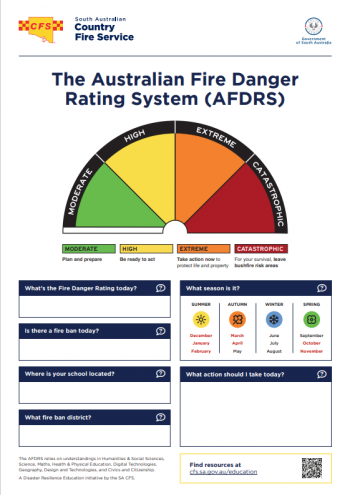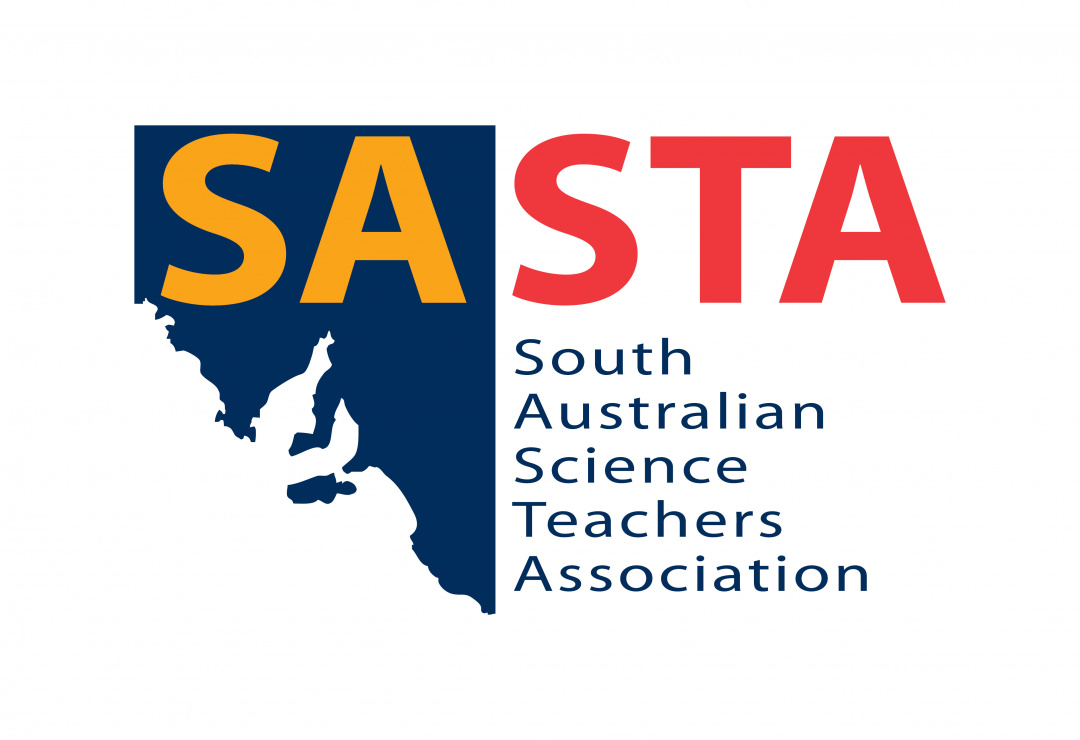Posted by SASTA
on 02/11/2022

The South Australian Country Fire Service has developed NEW curriculum linked lesson plans, teacher guides, and resources, as a part of the Child and Youth Bushfire Education Program, a Disaster Resilience Education initiative by the South Australian Country Fire Service. These education resources follow a child centred, teacher facilitated mode of learning drawing on the current research and practice in Australia around disaster resilience education, as illustrated by the Australian Institute for Disaster Resilience.
Visit cfs.sa.gov.au/education and check under For Teachers to access a growing number of lessons and education resources and get your students and education site bushfire ready now. Check under For Students for Research projects and FAQs.
The NEW Australian Fire Danger Rating System
Check out the Featured lesson – Lesson 2: Danger Weather and Ratings and connected education resources here.
This is an Australian Curriculum linked lesson from the Primary series, Disaster Resilience, and explores the NEW Australian Fire Danger Rating System (AFDRS) as a survival tool in the context of weather and seasons.
Disaster Resilience Education (DRE) builds students’ understanding of the causes, behaviours and effects of hazards while developing a range of skills to help prevent and reduce the harmful impacts of disaster.
Why learn disaster resilience at school?
Learning about bushfires and other hazards can equip students with the skills and knowledge to save lives in the face of a disaster. As some natural hazards become more frequent and severe, placing children in harm’s way, DRE is vital. The Sendai Framework for Disaster Risk Reduction 2015-2030₁ and Australia’s National Strategy for Disaster Resilience₂ both recognise that children play a critical role in increasing bushfire knowledge, awareness, and preparedness in their households and communities. The SA CFS aims to develop programs and resources to support children to improve their resilience as part of our broader range of engagement programs and activities.
Benefits of disaster resilience education
Recent research has found that quality DRE is associated with a range of beneficial personal development outcomes, including increased confidence and enhanced leadership and communication skills. The existing research further indicates that students highly value the learning opportunities that DRE can provide, with teachers reporting a high level of student engagement in disaster resilience activities.
Incorporating a focus on disaster resilience in the Early Childhood sector helps children deal with other personal challenges they may experience during childhood. It provides a foundation for developing coping skills and healthy thinking habits which will serve them well in later life.
To access SA CFS lesson plans, teacher guides and education resources and get your students and education site bushfire ready visit cfs.sa.gov.au/education or contact cfs.communityengagementsupport@sa.gov.au.
- UNISDR 2015, undrr.org/publication/sendai-framework-disaster-risk-reduction-2015-2030
- Council of Australian Governments (COAG) 2011, The National Strategy for Disaster Resilience, knowledge.aidr.org.au/resources/national-strategy-for-disaster-resilience
In this Section
Archive
- December 2025
- November 2025
- October 2025
- September 2025
- August 2025
- July 2025
- June 2025
- May 2025
- April 2025
- March 2025
- February 2025
- January 2025
- December 2024
- November 2024
- October 2024
- September 2024
- August 2024
- July 2024
- June 2024
- May 2024
- April 2024
- March 2024
- February 2024
- December 2023
- November 2023
- October 2023
- September 2023
- July 2023
- June 2023
- May 2023
- April 2023
- March 2023
- February 2023
- January 2023
- December 2022
- November 2022
- October 2022
- August 2022
- July 2022
- June 2022
- May 2022
- April 2022
- March 2022
- February 2022
- January 2022
- December 2021
- November 2021
- October 2021
- September 2021
- August 2021
- July 2021
- June 2021
- May 2021
- April 2021
- March 2021
- February 2021
- January 2021
- December 2020
- November 2020
- October 2020
- September 2020
- August 2020
- July 2020
- June 2020
- May 2020
- April 2020
- October 2018
- September 2018
- August 2018
- July 2018

